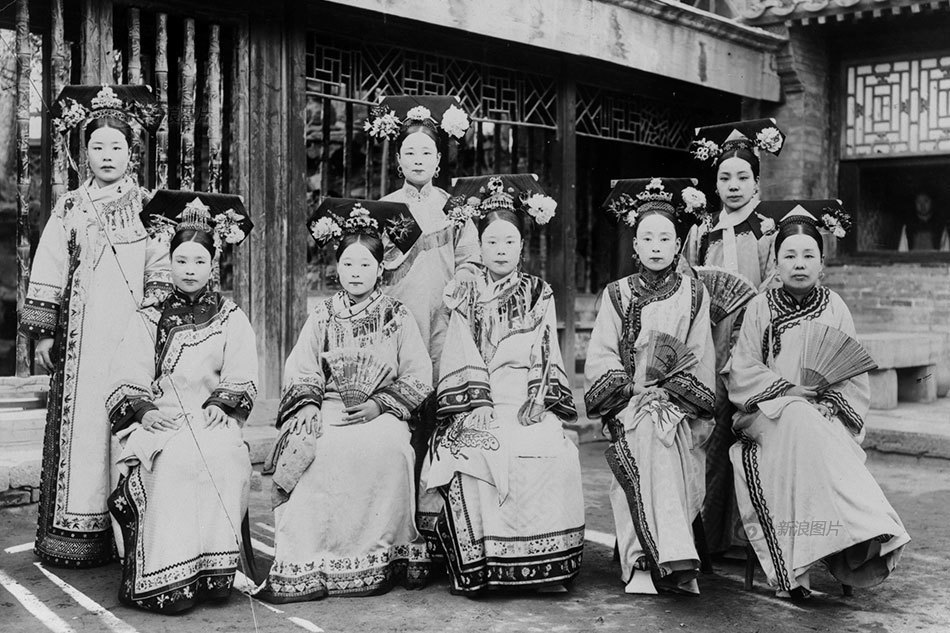Editor's Note:
During the past century, China has witnessed dramatic social changes, from the end of Qing Dynasty (1644-1911) to the establishment of new China (1949), from Cultural Revolution to reform and opening-up. Meanwhile, Chinese women also experience changes on social status and self-awareness, which is embodied in women's clothing evolution.
Just as famous contemporary Chinese writer Eileen Chang wrote in her prose Chinese life and Fashions in 1943, “In times of political turmoil, unable to improve their social environment, people can only create their bodily environments–namely, clothes, since we all live in our clothes.”Photos: sina.com.cn - Xinhua
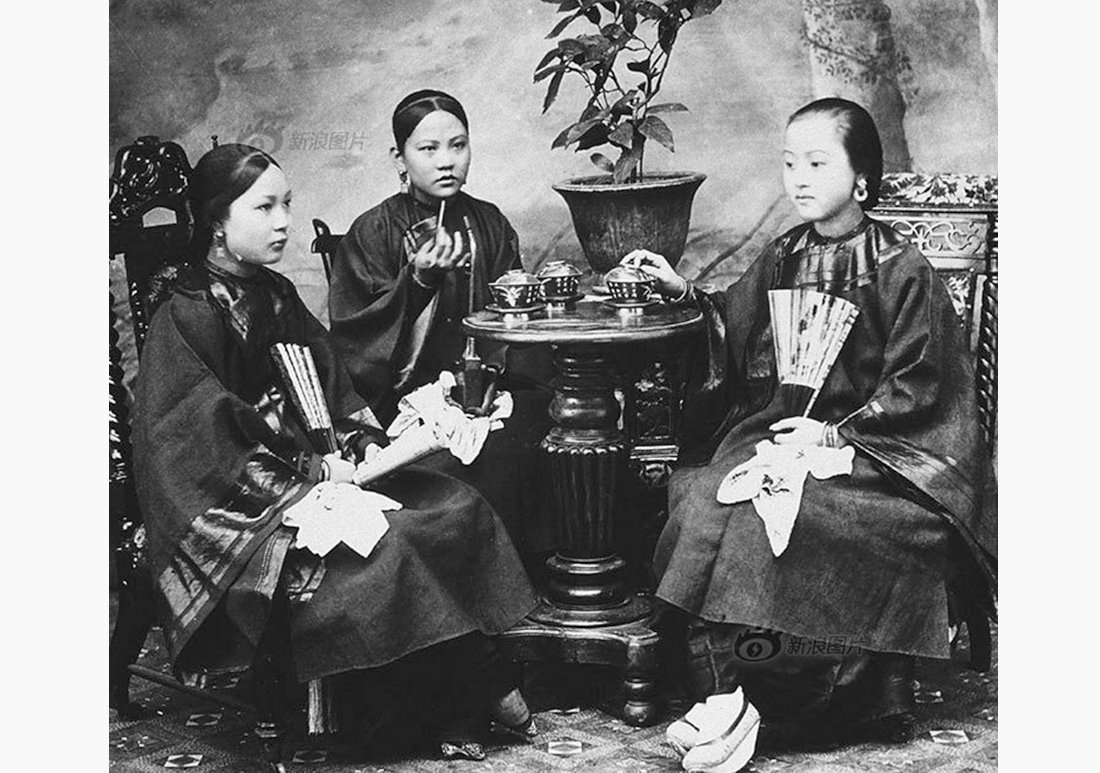 Pictured are women in traditional clothes of Han ethnicity in Hong Kong 1880. The traditional Han-ethnicity women clothes featured a topcoat and skirt with large cuffs and skirt hems.
Pictured are women in traditional clothes of Han ethnicity in Hong Kong 1880. The traditional Han-ethnicity women clothes featured a topcoat and skirt with large cuffs and skirt hems. 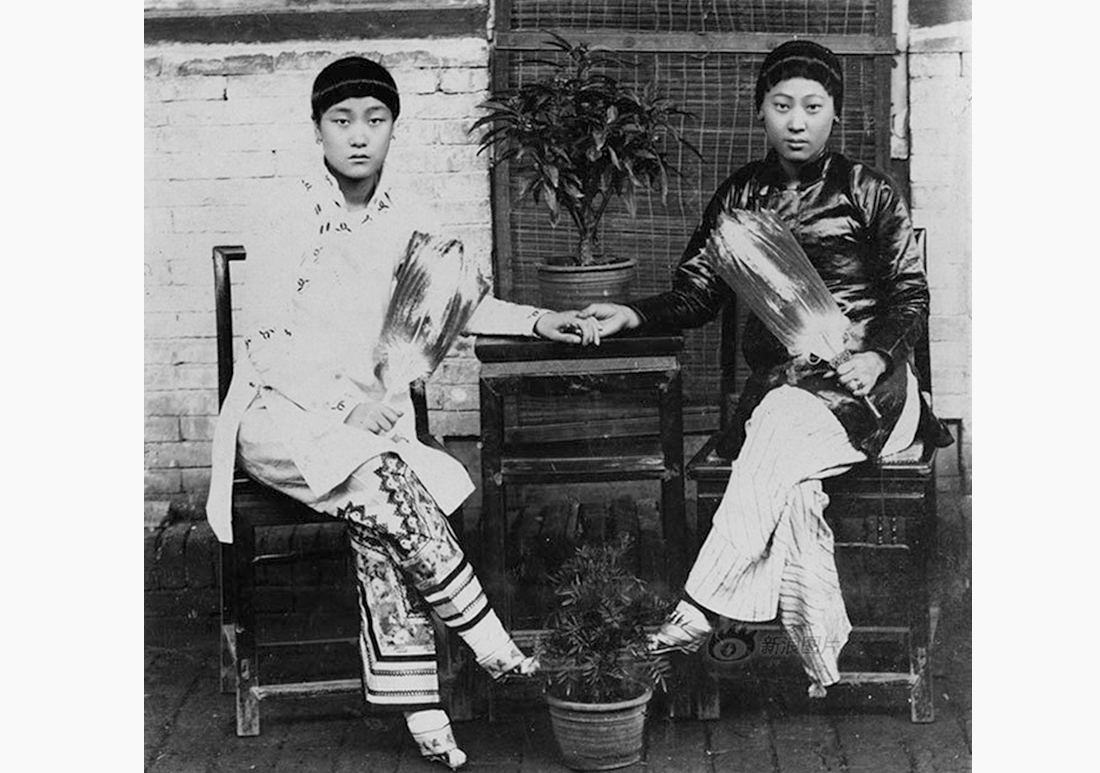 Two brothel women both with bound feet in the 1910s, when Chinese women’s dress had been somewhat influenced as Western culture gradually entered China. Women at brothels usually lead the latest fashion style at that time.
Two brothel women both with bound feet in the 1910s, when Chinese women’s dress had been somewhat influenced as Western culture gradually entered China. Women at brothels usually lead the latest fashion style at that time. 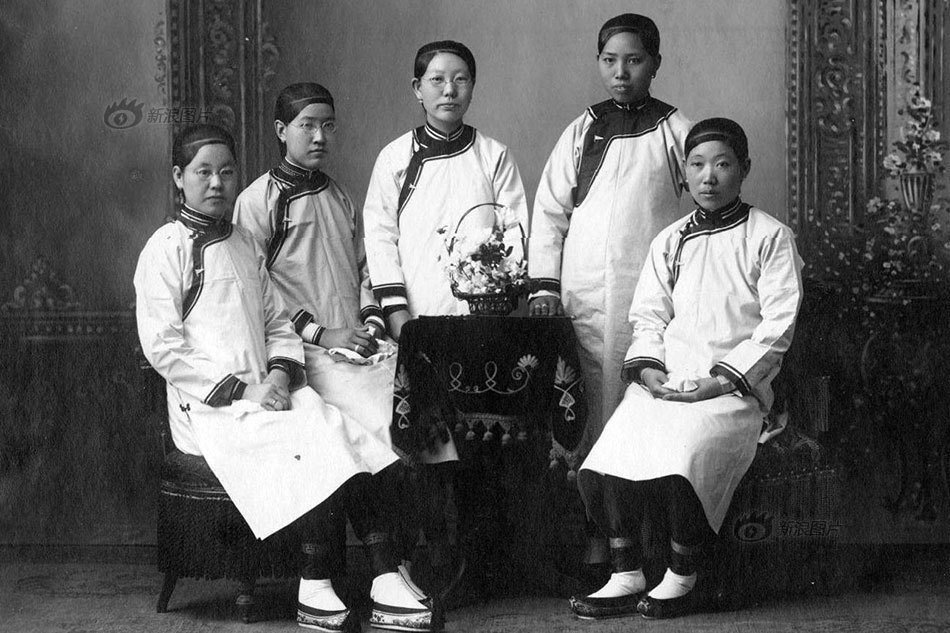 Pictured are female graduates dressed in school uniforms of Beijing Huiwen College 1907. Although uniforms of these students were still in Man-ethnicity style, the design is more concise.
Pictured are female graduates dressed in school uniforms of Beijing Huiwen College 1907. Although uniforms of these students were still in Man-ethnicity style, the design is more concise. 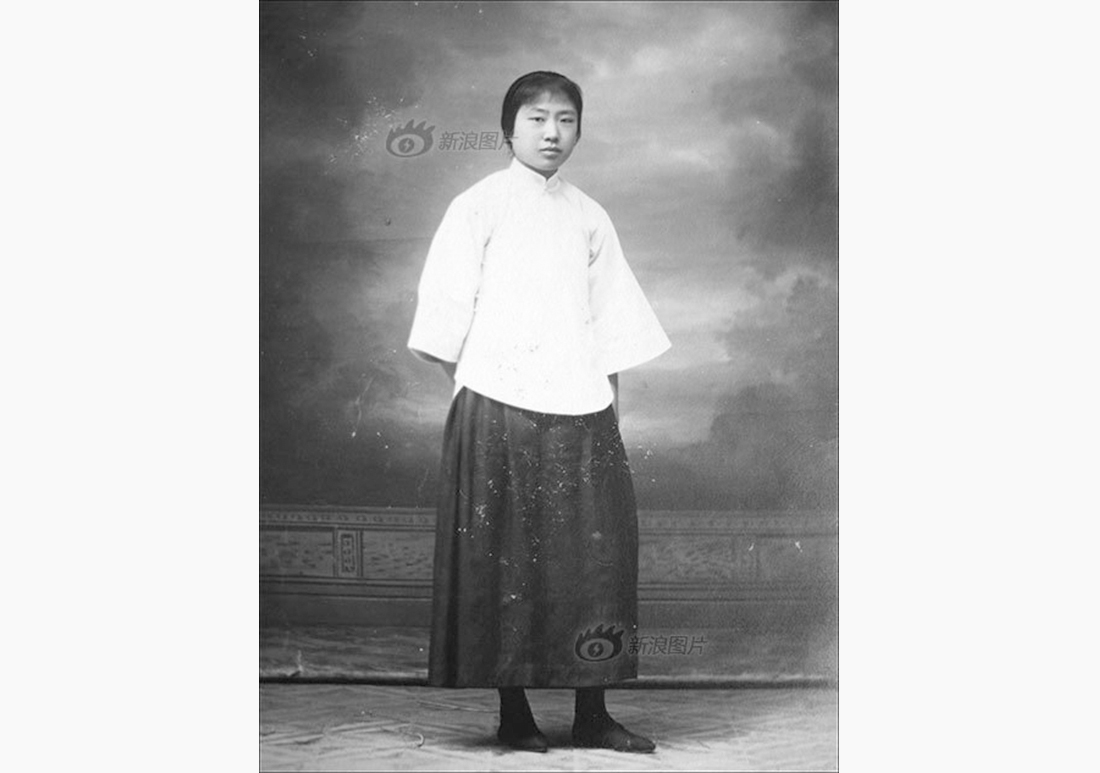 Pictured is the Chinese female school uniform appearing in 1913 and popular around 1919.
Pictured is the Chinese female school uniform appearing in 1913 and popular around 1919. 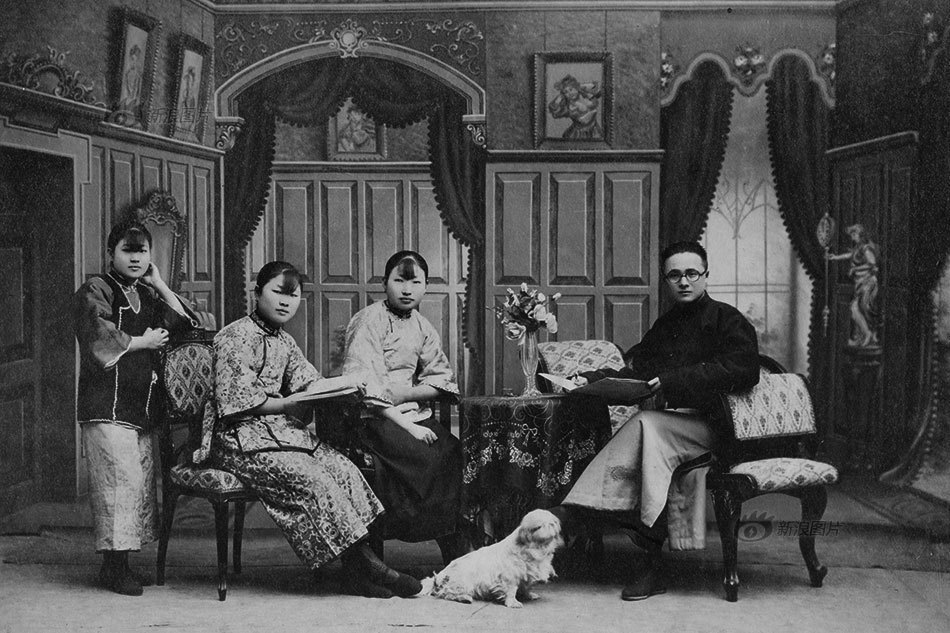 Women in above picture are dressed in topcoats and skirts in Shanghai 1925. After 1925, due to the simple design, the school-uniform-style was gradually outdated by the above-pictured female dresses. The three women also kept typical bangs which were popular at that time.
Women in above picture are dressed in topcoats and skirts in Shanghai 1925. After 1925, due to the simple design, the school-uniform-style was gradually outdated by the above-pictured female dresses. The three women also kept typical bangs which were popular at that time. 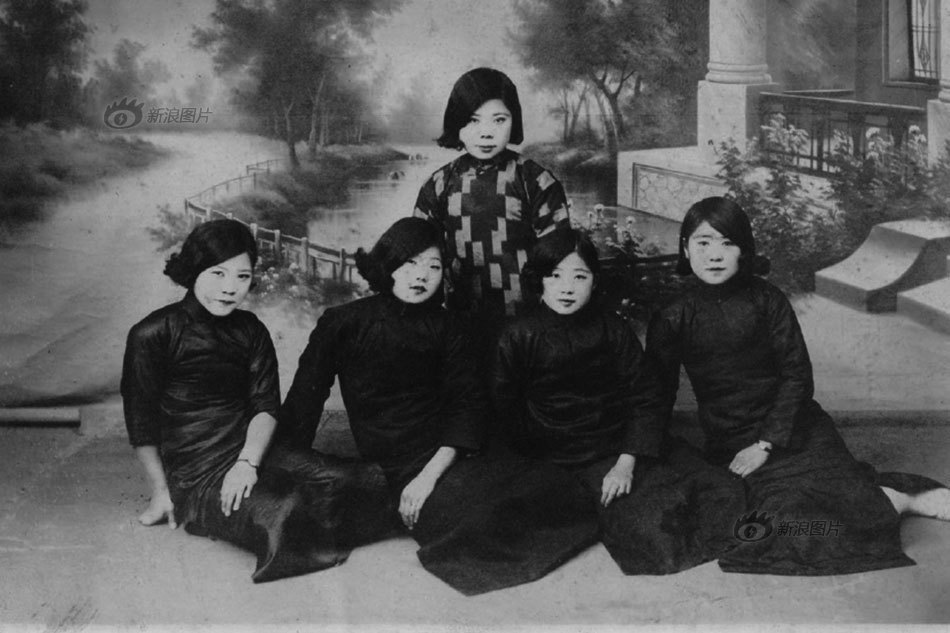 Pictured are female students dressed in qipao which appeared in 1920s. After China's anti-imperialist and anti-feudal May Fourth Movement of 1919, the whole society appealed to ideological emancipation. Women’s dress began to show female curves compared to the old linear style. Qipao was first popular among brothel women, and later became a hit in whole society.
Pictured are female students dressed in qipao which appeared in 1920s. After China's anti-imperialist and anti-feudal May Fourth Movement of 1919, the whole society appealed to ideological emancipation. Women’s dress began to show female curves compared to the old linear style. Qipao was first popular among brothel women, and later became a hit in whole society. 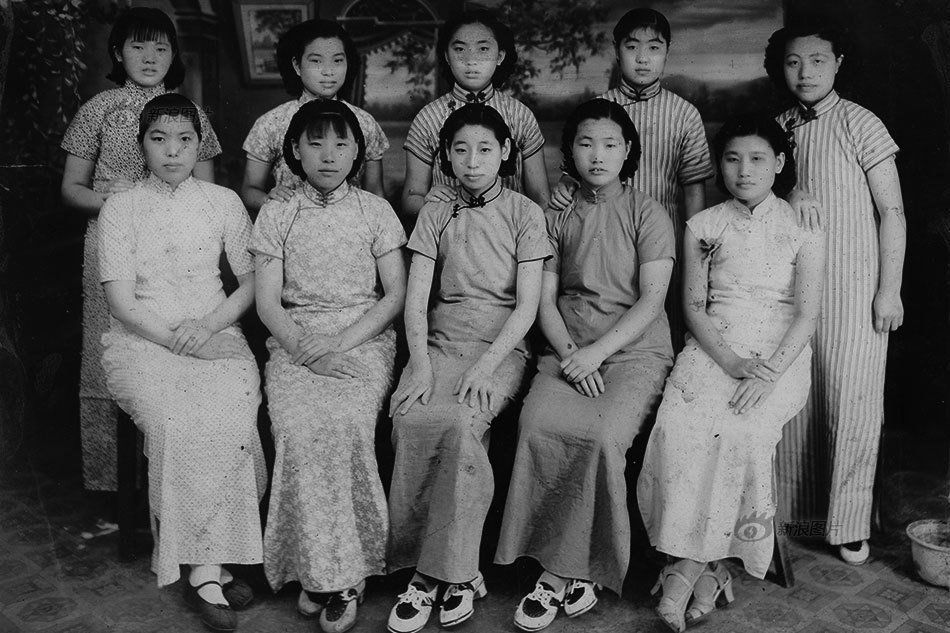 Pictured are female students in 1930s Shanghai. With influence of Western culture, Chinese women began to appeal to gender equality. Compared to the serious and rigid style at the early stage, qipao was gradually modified to highlight curves of women’s chest, waist and hips.
Pictured are female students in 1930s Shanghai. With influence of Western culture, Chinese women began to appeal to gender equality. Compared to the serious and rigid style at the early stage, qipao was gradually modified to highlight curves of women’s chest, waist and hips. 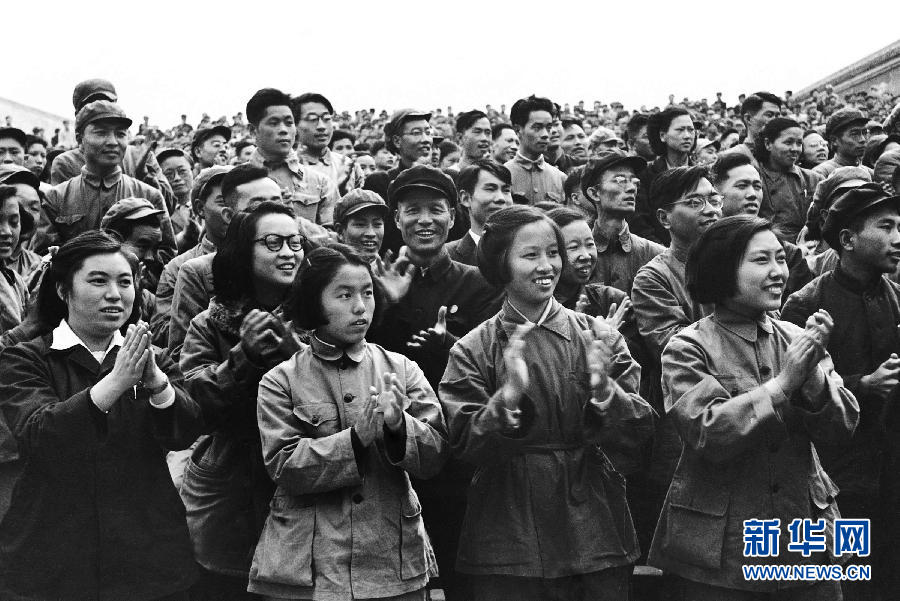 Pictured are women dressed in Lenin-style suits at an event in 1951. At the early stage of new China, under the background of good Sino-soviet relations, “Lenin suits” became popular among people as symbol of revolution. “Lenin suits” were named after the Soviet Union leader Lenin because he often wore it after October Revolution in 1917. Women then tended to wear “Lenin suits” and kept short hair to make themselves look bright and brave. The Lenin-style suits were usually in blue, gray and black colors to promote austerity.
Pictured are women dressed in Lenin-style suits at an event in 1951. At the early stage of new China, under the background of good Sino-soviet relations, “Lenin suits” became popular among people as symbol of revolution. “Lenin suits” were named after the Soviet Union leader Lenin because he often wore it after October Revolution in 1917. Women then tended to wear “Lenin suits” and kept short hair to make themselves look bright and brave. The Lenin-style suits were usually in blue, gray and black colors to promote austerity. 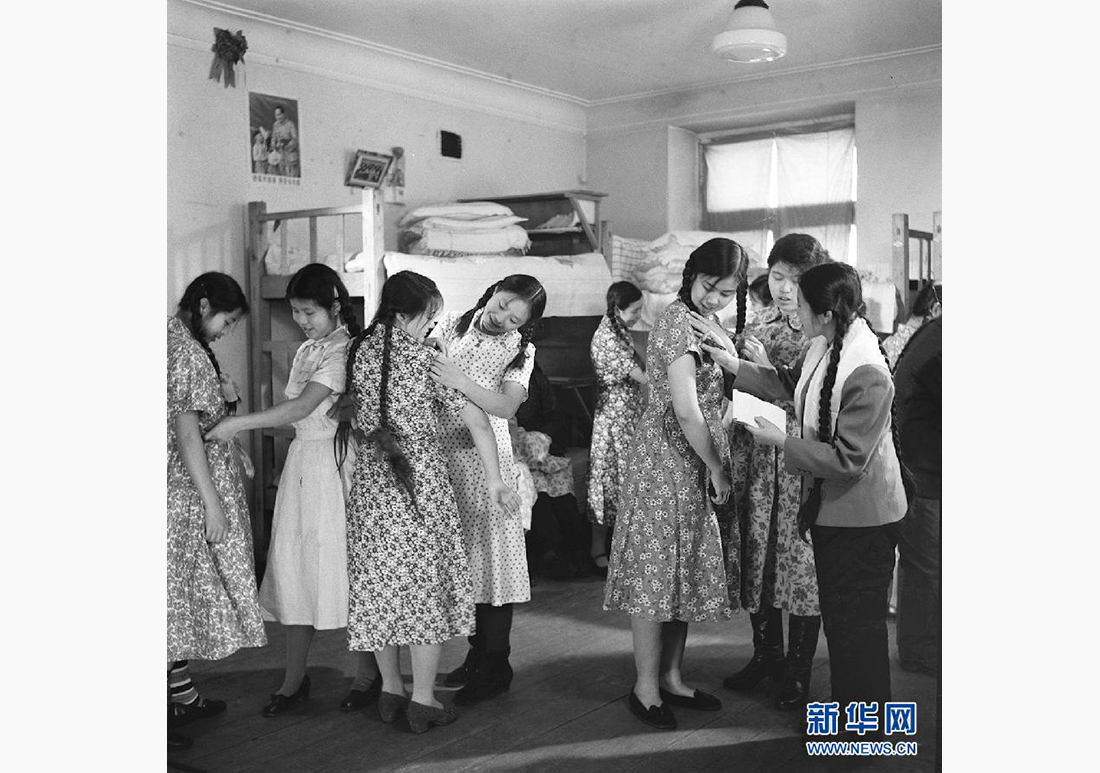 Women workers try on one-piece dresses at a textile mill, Harbin 1957. The short-sleeved dress with a draped wrap was the common clothing of Soviet women then and entered China in the 1950s. With relatively brighter colors and floral patterns, the dress quickly became a hit in China.
Women workers try on one-piece dresses at a textile mill, Harbin 1957. The short-sleeved dress with a draped wrap was the common clothing of Soviet women then and entered China in the 1950s. With relatively brighter colors and floral patterns, the dress quickly became a hit in China. 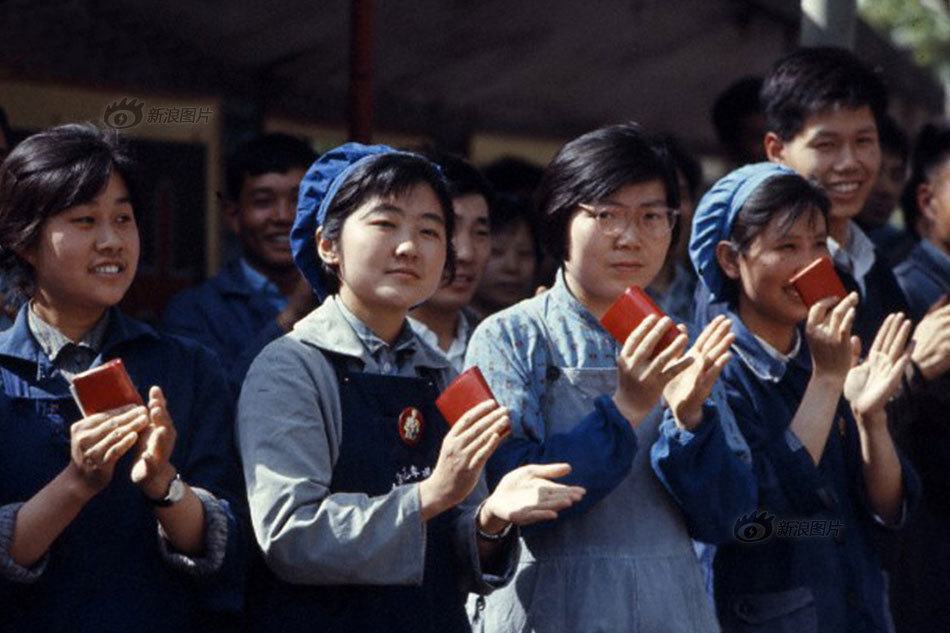 Pictured are young women in Beijing 1971. As China entered the period of Cultural Revolution (1966-1976), the whole of China advocated simple clothes in blue, gray and green colors. Wearing clothes like suits, qipao, and even the one-piece dress was regarded as anti-socialist.
Pictured are young women in Beijing 1971. As China entered the period of Cultural Revolution (1966-1976), the whole of China advocated simple clothes in blue, gray and green colors. Wearing clothes like suits, qipao, and even the one-piece dress was regarded as anti-socialist. 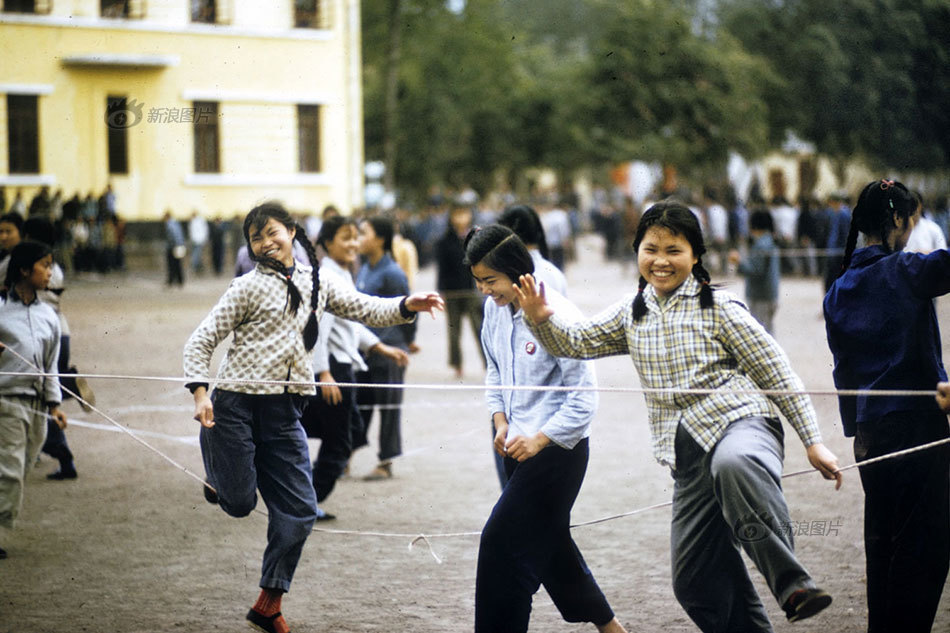 Women in rope skipping games in Guangzhou 1972.
Women in rope skipping games in Guangzhou 1972.
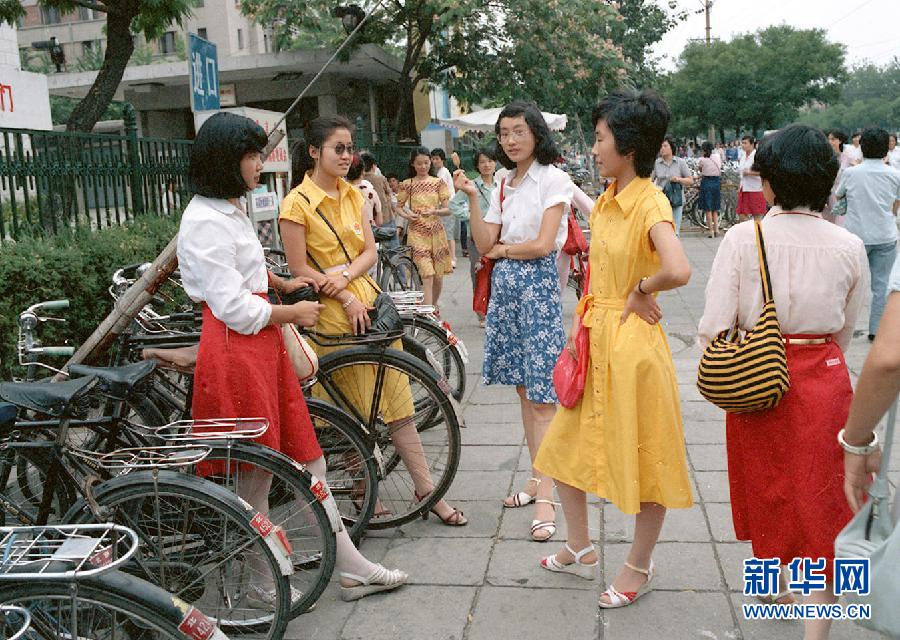 Pictured are women in bright dresses and skirts chatting on the streets of Beijing 1986. Since the reform and opening-up policy in 1978, China also underwent changes in clothes. In 1979, the French brand Pierre Cardin entered China. In the 1980s, people became more open-minded about clothing, dresses in bright colors became popular among Chinese women.
Pictured are women in bright dresses and skirts chatting on the streets of Beijing 1986. Since the reform and opening-up policy in 1978, China also underwent changes in clothes. In 1979, the French brand Pierre Cardin entered China. In the 1980s, people became more open-minded about clothing, dresses in bright colors became popular among Chinese women. 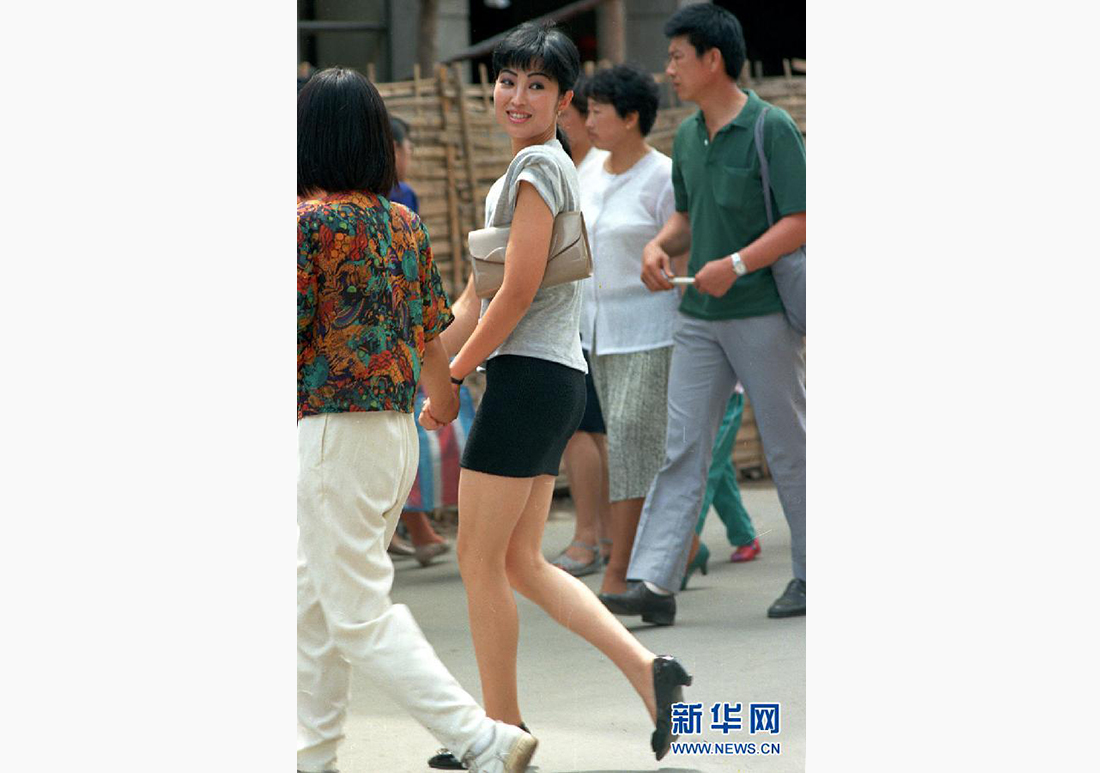 A woman dressed in a popular mini skirt in Dalian 1991.
A woman dressed in a popular mini skirt in Dalian 1991. 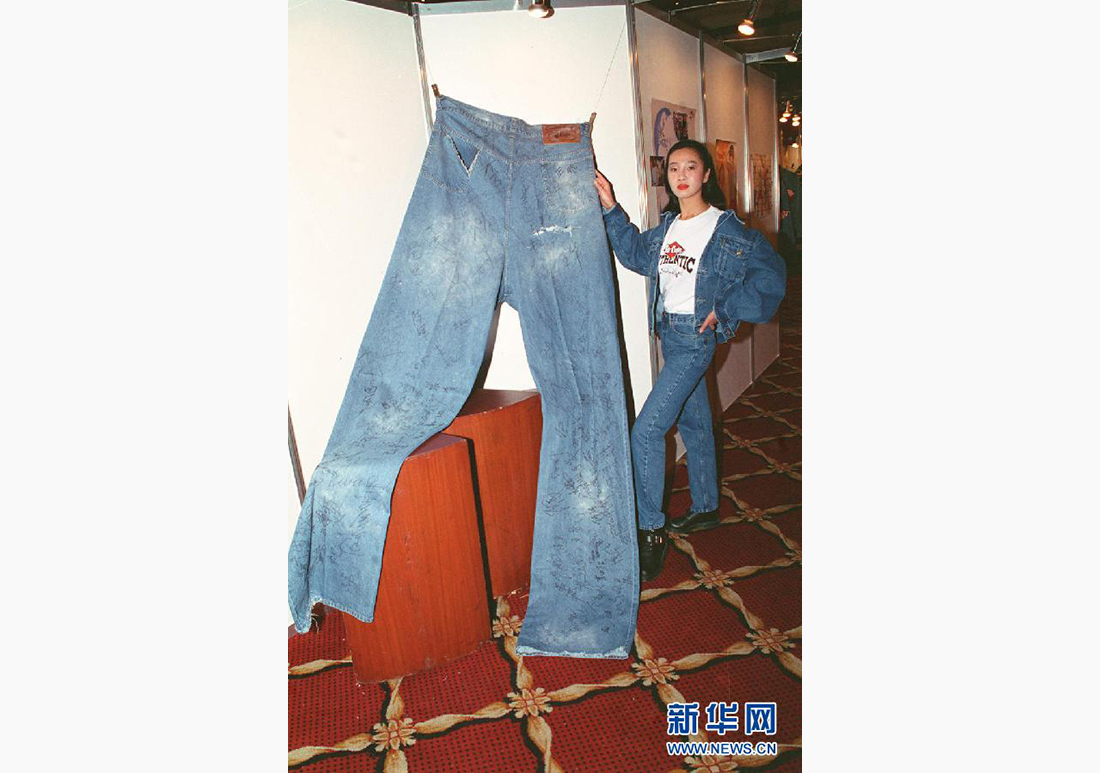 A woman poses at the Lee Cooper jeans exhibition in Beijing 1993. Jeans became a popular fashion choice in China since the 1980s.
A woman poses at the Lee Cooper jeans exhibition in Beijing 1993. Jeans became a popular fashion choice in China since the 1980s. 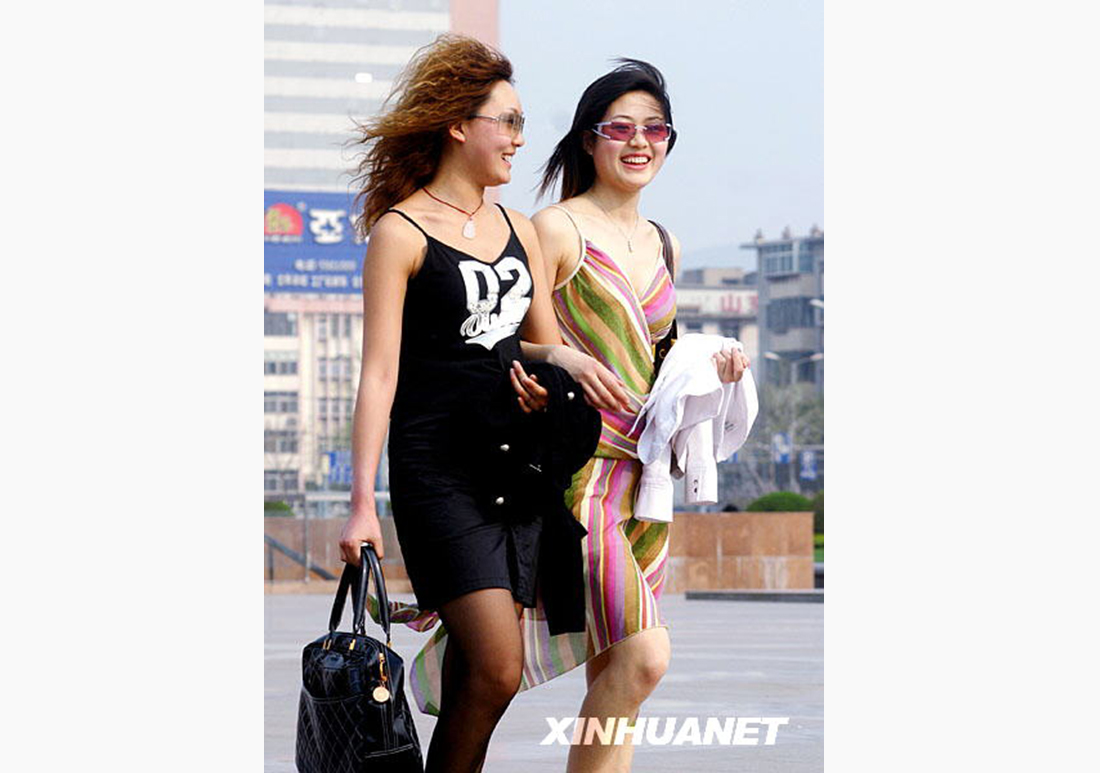 Two women in cool summer dresses on the streets of Jinan, Shandong Province 2005, revealing clothing are commonly seen.
Two women in cool summer dresses on the streets of Jinan, Shandong Province 2005, revealing clothing are commonly seen. 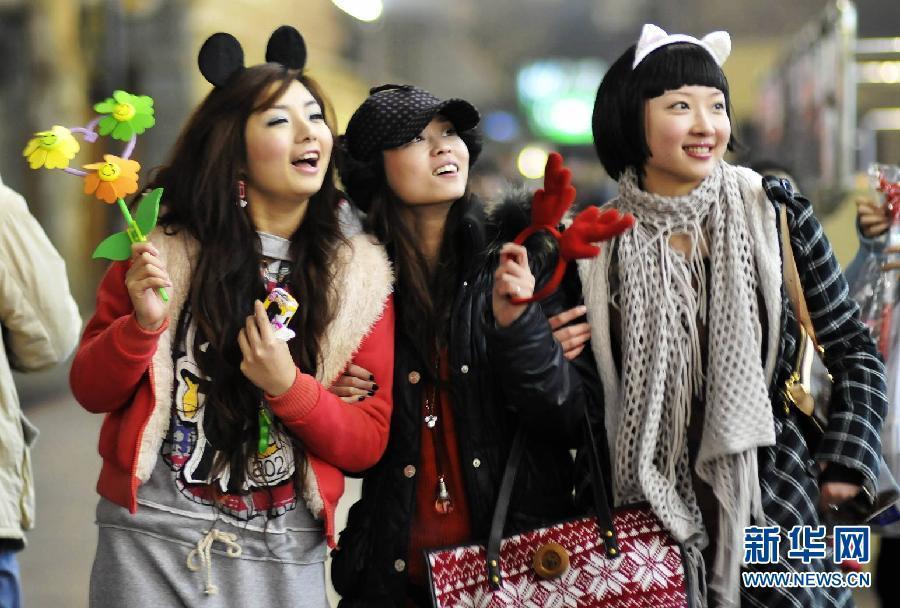 Three women celebrate on Christmas Eve in Yichang, Hubei Province 2008.
Three women celebrate on Christmas Eve in Yichang, Hubei Province 2008.
















